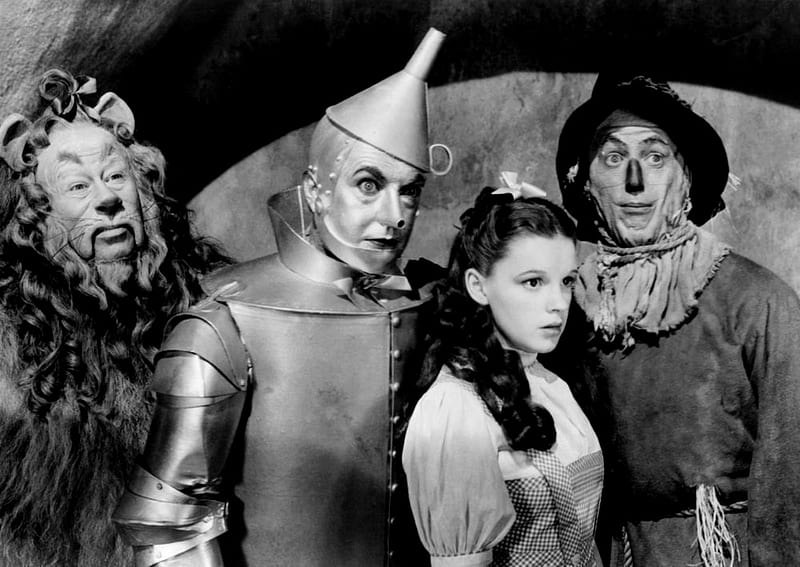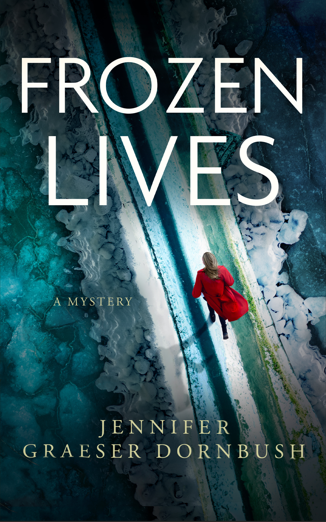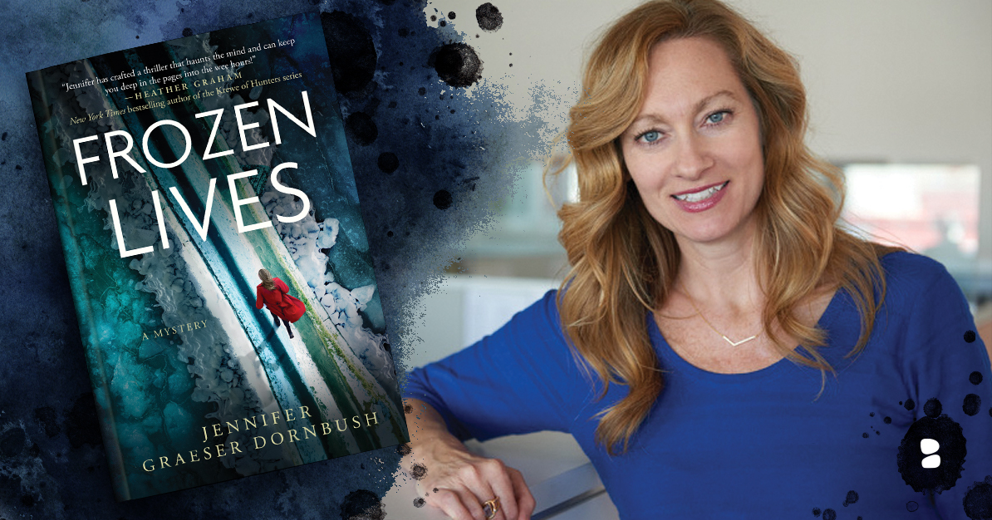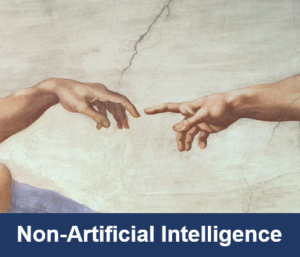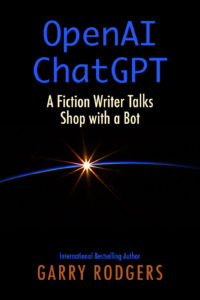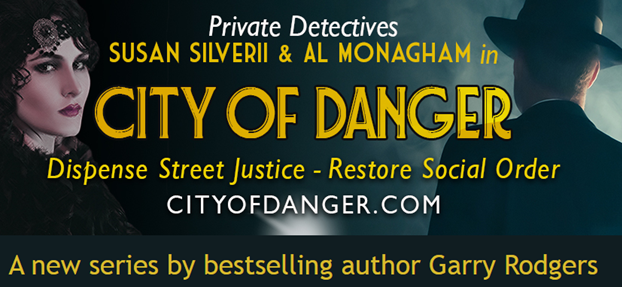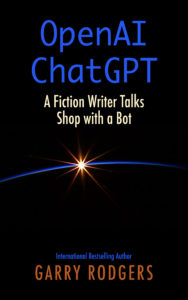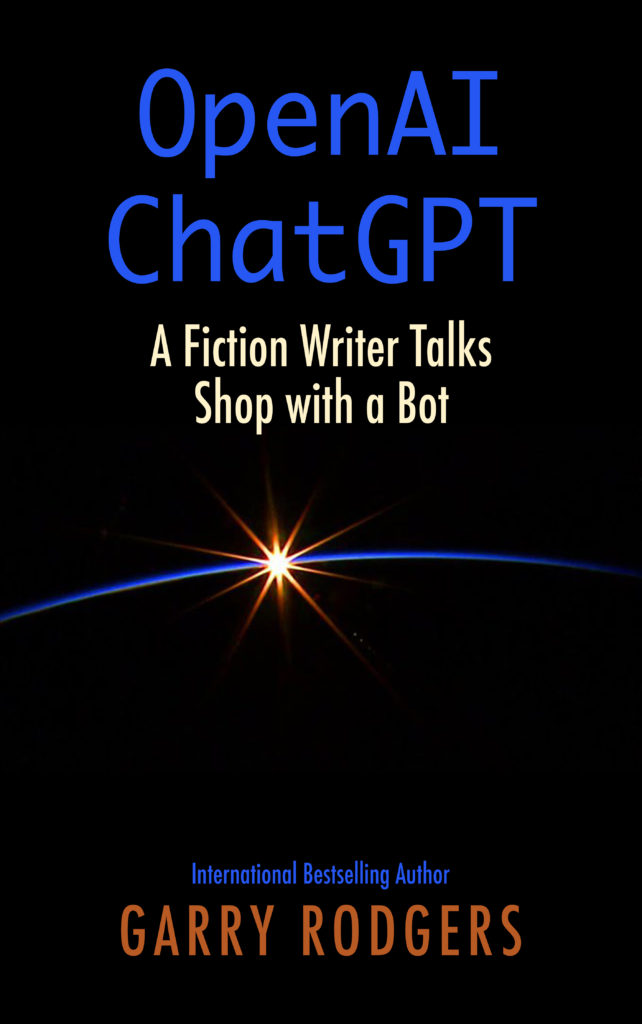 The Wizard of Oz, circa 1939, is one of filmmaking’s masterpieces. It stars Judy Garland as Dorothy who interacts with timeless characters like the brainless strawman, the cowardly lion, and the rusty old tin man. And who can forget Dorothy’s little dog Toto and the Wicked Witch of the West? The show is about a fictional land far from home where home bodies never really go.
The Wizard of Oz, circa 1939, is one of filmmaking’s masterpieces. It stars Judy Garland as Dorothy who interacts with timeless characters like the brainless strawman, the cowardly lion, and the rusty old tin man. And who can forget Dorothy’s little dog Toto and the Wicked Witch of the West? The show is about a fictional land far from home where home bodies never really go.
Speaking of fiction, I’m pleased to host a wonderfully talented writer who’s just released the fourth book in her Coroner’s Daughter series. It’s titled Frozen Lives. Please welcome my long-time friend and bookwriting/screenwriting colleague, Jennifer Graeser Dornbush with her guest piece, Home is Where The Bodies Are.
— — —
I recently had the opportunity to watch a big screen viewing of The Wizard of Oz. Of course, I have seen this movie a hundred times on a small screen. The first time was on my family’s 13″ black and white TV as a kid. Decades later, seated in the ornate, historic Orpheum Theatre in Phoenix, Arizona, I saw the film audiences viewed it in 1939.
Dorothy was larger than life and magical! Imagine her towering over you on the big screen in that classic moment when she taps the heels of those ruby slippers, tips her face towards heaven, and recites that earnest prayer, “There’s no place like home. There’s no place like home.”
Have you ever noticed that the message of The Wizard of Oz is completely rooted in the theme of HOME? I think that’s why we identify so much with the movie. And I am sure that is why it has stood the test of time and become a classic.
The film’s message is about the importance of the place we call home… Isn’t HOME at the core of what we all long for? We are all beings who seek to belong to a place that we affectionately call home.
Think of the prodigal son… at the end of the story, all he wanted was to be home with his father and brother on their farm. That’s all that mattered to him after he had been given everything else and lived the fast life.
HOME is the truest of all places in the world.
HOME is the place we want to be above all others.
The word we use, HOME, represents so much more than a physical geography or red dot on a GPS. And I believe every one of us could come up with very different definitions of what home means. But I believe there are a few common denominators.
Generally speaking, home is everyone and everything inside the sphere of where you exist. In this sphere, we create endless personal stories with the people and experiences that we have. Home may include people who are biologically related to you. Or it may not. It may include relationships of choice or circumstance.
This aspect of home is a sphere of community… the people and experiences that add beauty and depth to the tapestry of our lives. And no, we don’t always get to choose who is woven into this tapestry. Sometimes these people make the tapestry radiant, and other times, they cause tears in the fabric. But even this is home, with all its flaws and faults.
Home is a blender mix of emotions and feelings. It’s the place where we are allowed to feel all the feels, hopefully without fear of judgement or condemnation. Home is the place or people where we can test out our feelings and thoughts, and rest assured we will still be loved on the other side of them.
Home is about being known and seen. Home is the place where you experience the truest sense of belonging and find the truest purpose for your life. Home is the sphere of where we learn things and grow.
From life skills like how to bake cookies, play the piano, or change a tire. To relationship skills, like how to live peacefully with others, how to serve others, how to connect to family, friends, and neighbors in a meaningful, loving way.
Home is this place we are invited to become a source of grace to one another when we forgive one another; and we are invited to learn how to accept grace from each other when we don’t deserve it.
Look again at the Wizard of Oz. This lesson of grace is arguably the most important lessons Dorothy learned as she completes her journey and returns home to Kansas. As soon as she wakes up, back in her own bedroom, Dorothy admits she is wrong for running away. She is then able to experience the forgiveness and grace of her family and friends who surround her bedside and love her and want the best for her in spite of her flaws. In experiencing this, Dorothy makes her final transformation and seals the theme of the movie: There is no place like home.
When people ask me what I write, I tell them I write crime fiction… but it’s more than that… under all the crime solving and forensics, I write about what it means to be HOME.
The Coroner’s Daughter is a series of the prodigal daughter’s story. A lost daughter runs away from home and family when she is 16 years old for reasons that she is both liable for and not liable for. She then estranges herself for the next ten years, which causes a big chaotic hole in her disordered life that she must address in order to receive the grace and growth she needs to return home.
Yes, on the outside it looks like Emily has everything going for her. Successful new surgeon. Great life in Chicago. An adoring fiancé. But inside, she’s lost her true north. To find it, she needs to undergo a heroine’s transformation, much like that of Dorothy. She experiences forgiveness, a restored appreciation of home, and a renewal of her purpose and her place in it.
In The Coroner’s Daughter books, we follow this struggle and Emily’s heroic transformation. For her, this means returning to her hometown community where she can successfully extend her father’s crime solving legacy and live into her deepest calling.
Here, she finds the place and people she belongs to. Here, she can contribute in ways only she is uniquely and forensically gifted to do. With new resolve and sense of purpose, Emily knows she will never be unraveled from this place ever again.
Emily discovers, just as the prodigal son, and Dorothy from Kansas do… that there is no place like home.
…because for Dr. Emily Hartford, (because for Emily, The Coroner’s Daughter), home is where the bodies are.

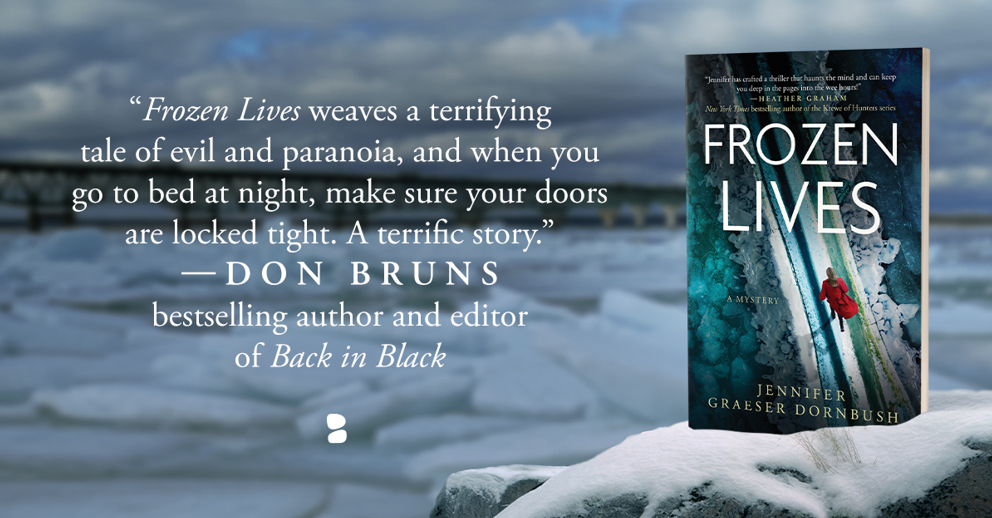 Note from Garry: Frozen Lives is a new release, October 29, 2024. You can get it on Amazon by clicking this link.
Note from Garry: Frozen Lives is a new release, October 29, 2024. You can get it on Amazon by clicking this link.
Author Bio: Jennifer Dornbush works as a screenwriter, author, speaker, and forensic specialist. She has developed film and TV projects, authored numerous books, and frequently speaks around the world on crime fiction and forensics. She divides her time between Michigan and Arizona. www.jenniferdornbush.com
Free ARC: You can win a FREE ARC (Advance Reading Copy) of Frozen Lives. Click Here

